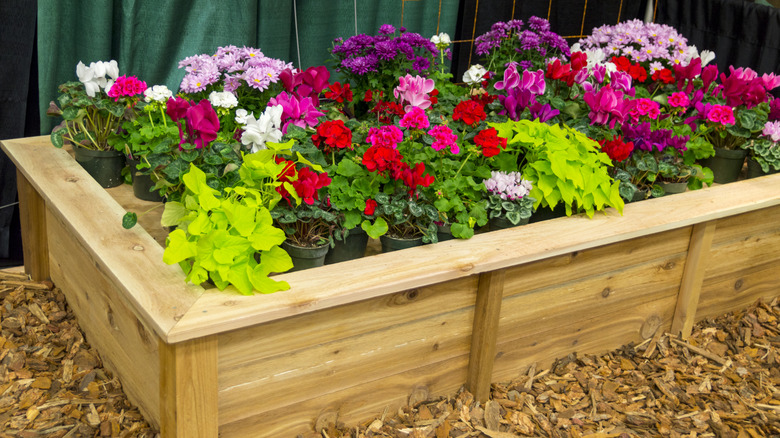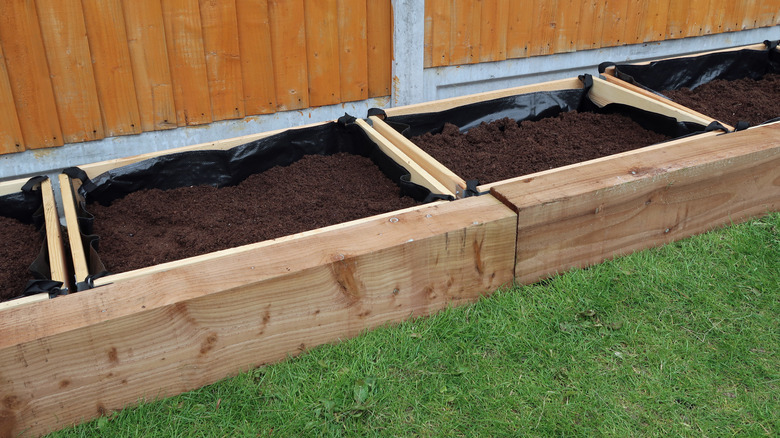Essential Tips For Waterproofing A Wooden Planter Box
We may receive a commission on purchases made from links.
Wooden planter boxes add a natural look to any backyard, since wood fits nicely against bright flowers and green garden plants. But this beloved material has a downside: It's susceptible to rot and water damage. By waterproofing your wooden planter box, not only will its life be prolonged, but you can also guarantee your plants will have a dependable and solid home. The good news? It's not as complicated as it sounds. A few thoughtful measures can make all the difference.
Before you start waterproofing, though, one essential wooden planter tip is to select the right kind of wood. Inherently durable and moisture-resistant woods, like cedar, redwood, and teak, are great options. Whether you've opted for a moisture-resistant wood species or not, another tip is to treat the planter box before using it in the garden — the effort will be well worth it in the long term. Using a top-quality wood sealer is key. Sealants, particularly those made for outdoor use, like the Seal It Green Garden Box Sealer, create a barrier that repels moisture while allowing the wood to breathe. Make sure to get in all the sides, including the inside, edges, and even the bottom of the planter.
Tips for creating a moisture-resistant planter interior
In addition to sealing the wood, the step you don't want to forget with planter boxes is adding an inside liner to create an additional waterproofing layer. A thick plastic liner, such as a pond liner or any other heavy-duty plastic, works great and prevents any water from directly coming in contact with the wood. When you install the liner, poke a few holes in its bottom for drainage. If the excess water has nowhere to go, it can cause your plants' roots to rot.
Speaking of drainage, make sure the planter box has a way to let excess water out. You can do this by drilling some holes in the bottom of the base and putting a layer of gravel, pebbles or landscaping fabric before filling it in with soil. Doing so prevents water from pooling inside and damaging the wood. Lastly, consider raising your planter box slightly off the ground with bricks or wooden blocks. Elevating the base promotes air circulation and reduces exposure to standing water, which could cause the planter to rot.

